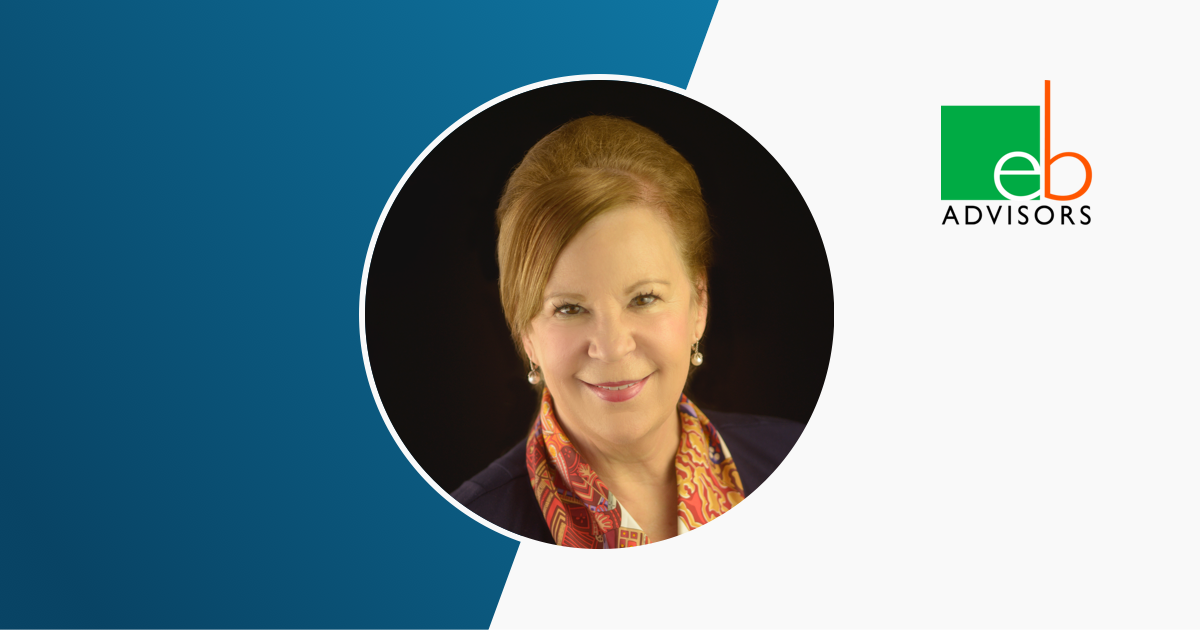We recently had the opportunity to connect with Suzy Johnson, a veteran of the benefits industry and the owner of a successful brokerage firm in North Carolina. Her role is to be the chief "rainmaker" and visionary of the company, where she focuses on plan design and the creation of employee benefits strategies for the businesses she advises. Suzy is also passionate about nurturing her team members so they can reach their full potential. In this Q&A, we hear about the one book that’s top of mind for her, as well as her observations on the constantly evolving benefits space.
Can you tell us about your company?
I own and lead Employee Benefit Advisors of the Carolinas, LLC. We used to be an insurance brokerage company focused on smaller groups under 100 employees operating in North and South Carolina. Now, we’ve evolved and work with companies with 50 to 2000 employees who are candidates for a self funded health plan.
What’s one thing you wish everyone knew about your job?
Only the strong, passionate, and innovative will evolve. Also, growth is much harder to create now than it was in the past when the old model of commissions for selling health insurance was in place. These are very exciting times because the stakes (costs) are higher, and the results of the changes we can drive are much more rewarding.
What recent news or trend has you most excited about the healthcare benefits space?
The Health Rosetta Institute and Dave Chase’s book, “CEO’s Guide to Restoring the American Dream.” Dave is a disciple of high-value, low-cost primary care for all employees as the basis of an employer’s healthcare plan. Groups that have implemented high-value primary care at no cost to employees have overall lower healthcare costs because they’re receiving the right care, at the right price, in the right (and lowest cost) place of service.
What’s a common “myth” in the healthcare benefits space that you’d like to debunk?
That Preferred Provider Organization (PPO) networks provide a worthwhile discount. The discount is applied to a charge that sometimes mirrors as much as 500% of Medicare, so the idea that there are real savings is absurd. In most cases, the cash price will be lower and even then it’ll be way more than the healthcare systems accept from Medicare.
Also, it’s a myth to assume your healthcare bill will always be correct. More than 90% of all hospital bills contain errors, which are frequently egregious and costly for the plan and employees.
As a veteran of the benefits industry, what is the biggest change you’ve observed from when you first started your career to now?
The better question regarding health benefits is “what hasn’t changed?”
The healthcare system is much more costly and more inefficient than ever before. Yes, there are innovative treatments and surgical procedures that didn’t exist in the past. But they’ve all come at the expense of American workers and what they pay monthly from their paycheck for health benefits. As a result, employers have faced an uphill and difficult battle in the traditional insurance model to provide reasonably priced health benefits to their employees. The prices continue to escalate for those who don’t adopt new measures because no relief is in sight from healthcare, the government, or pharmaceutical companies.
Also, while costs are at an all-time high in most healthcare systems, insurance companies have become much more beholden to misaligned incentives. While they give lip service to the idea of “lowering costs,” the insurance companies have much to lose if the system changes, including giving up high margins provided to them through pharmacy rebates and other such incentives.
I used to think the solutions to lower healthcare costs would come from things such as consumer-driven health plans and tax incentives. However, we’ve had Health Savings Accounts (HSAs) since 2004 and it hasn’t been until recently — through companies like Amino — that access to usable transparency data has been available too, so consumers have been unable to determine which specialists and facilities will produce the best result at the lowest cost.
As Dave Chase says: “the cavalry is not coming from Washington to solve healthcare.”



